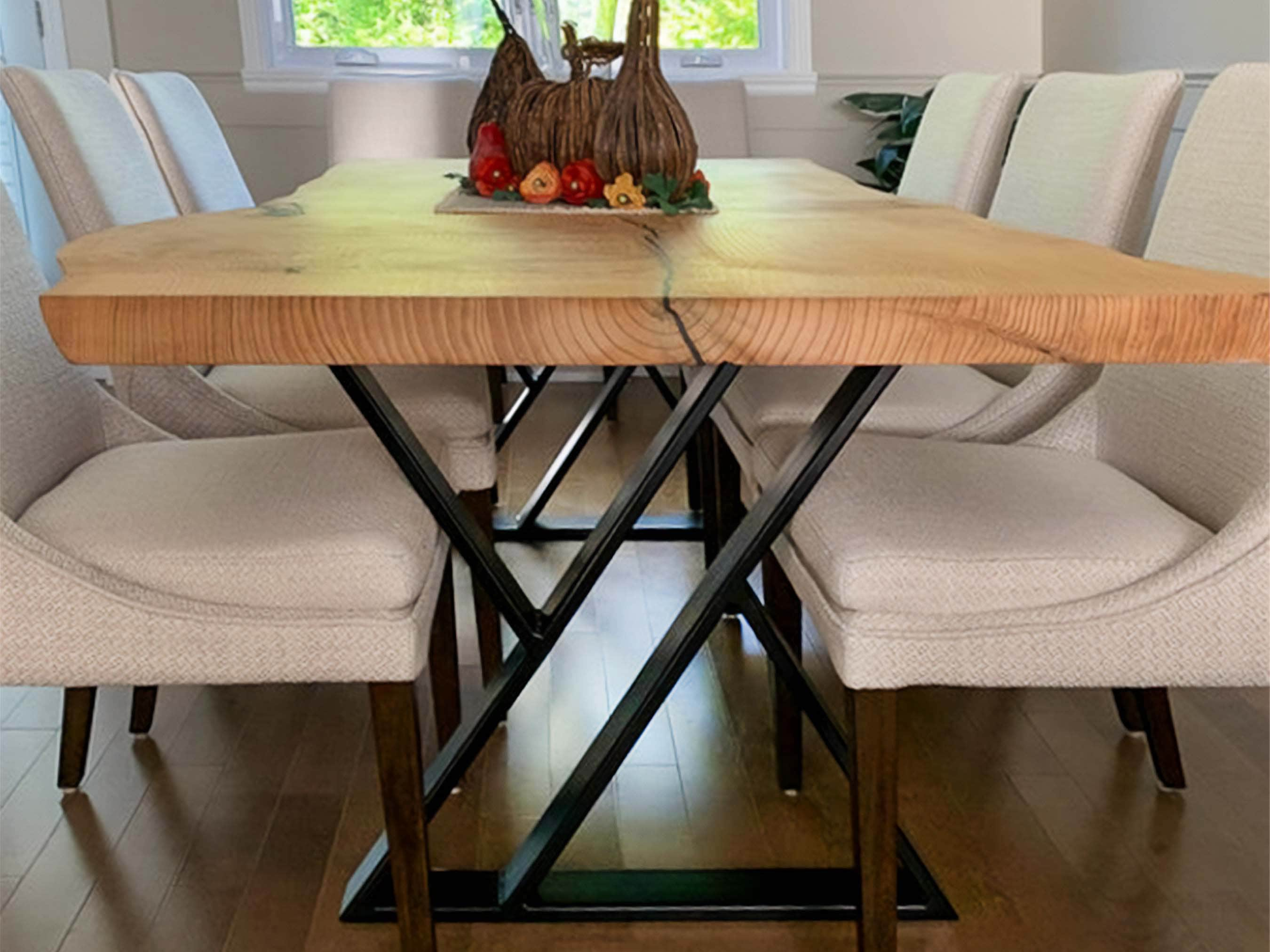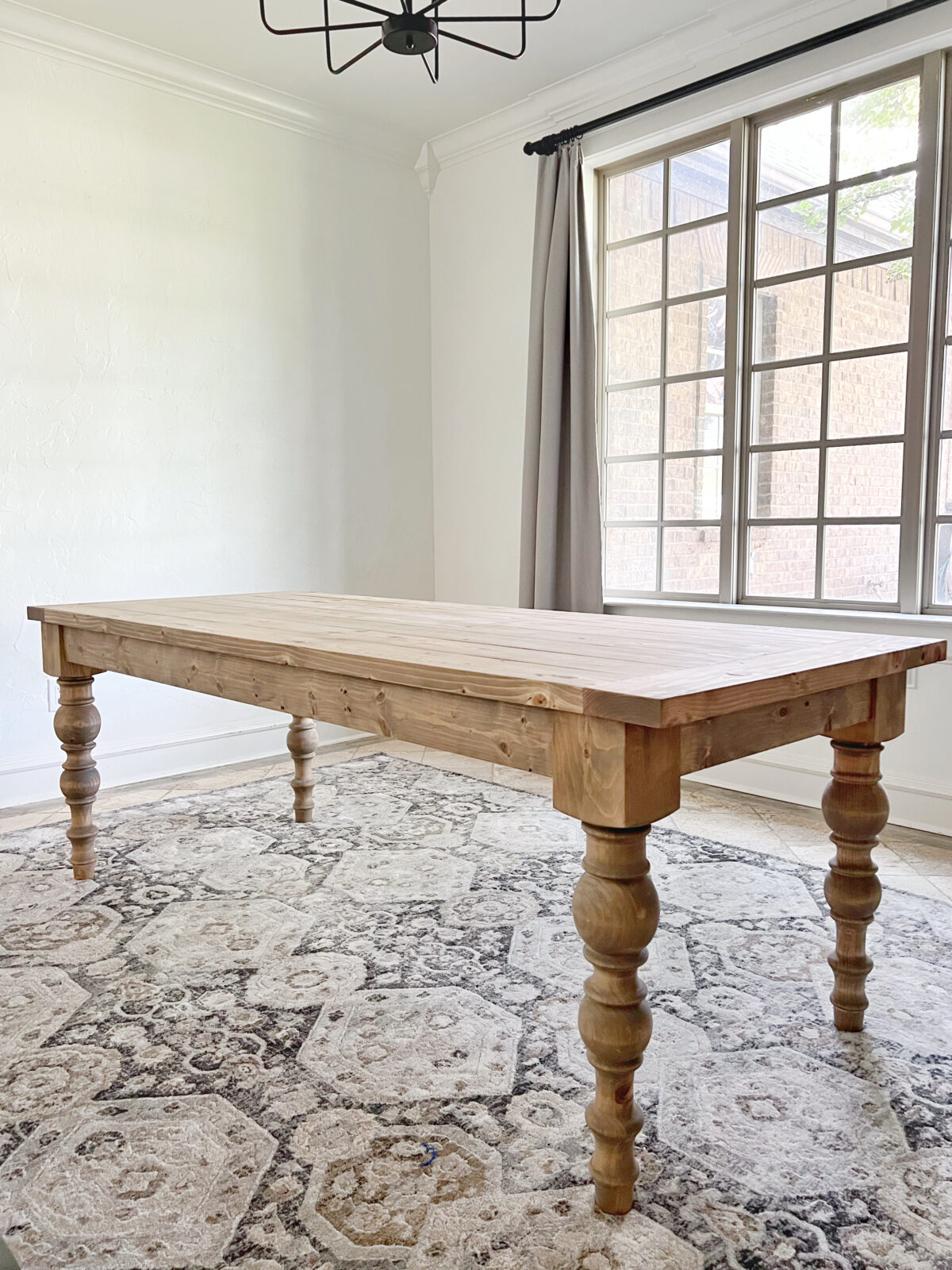The Ultimate Guide to Choose Long Lasting Dining Room Table Legs
The Ultimate Guide to Choose Long Lasting Dining Room Table Legs
Blog Article
Choosing the Perfect Eating Table: What Styles Work Best for Your Home?
Selecting the perfect table for your home can be a nuanced procedure that balances visual appeals and performance. Whether your area leans towards conventional elegance, contemporary minimalism, rustic charm, or industrial elegant, the range of styles offered can deal with diverse preferences. Each design supplies distinct advantages and challenges that can either improve or disrupt your dining area's consistency. Understanding how different products, shapes, and dimensions interact with your existing decor is important. To navigate these options successfully and locate a table that genuinely complements your home, think about the complying with aspects in information.
Examining Your Space
Examining the dimensions and layout of your dining area is an essential initial step in choosing the perfect table. Begin by measuring the size and size of the space, representing entrances, home windows, and other building functions that can influence table positioning. This makes sure that your table not only fits yet also permits for comfortable motion around it.
Think about the number of individuals you normally captivate. A table needs to accommodate your household's everyday demands while offering enough versatility for occasional visitors. Generally of thumb, designate a minimum of 24 inches of table width each to make sure a comfortable eating experience.
It's also vital to preserve suitable clearance around the table. Ideally, there ought to go to the very least 36 inches between the table edge and walls or various other furniture, enabling very easy gain access to and activity. For areas where chairs with arms or additional storage systems like buffets are included, raising this clearance to 48 inches is advisable.
Lighting and ambience play significant functions. Make certain that your dining table aligns with existing lights components or strategy for sufficient lighting options. This extensive spatial assessment assurances that your table not just fits literally yet also harmonizes with your space's general capability and aesthetic.
Popular Table Styles

Typical table usually feature ornate details, rounded legs, and rich wood coatings, stimulating a sense of classic style. They are best for homes with traditional style or those seeking to include a touch of sophistication to their eating location.
Modern eating tables focus on simpleness and clean lines, commonly incorporating materials like glass and steel. These tables are excellent for contemporary areas, giving a smooth and clean look that enhances minimal style philosophies.
Rustic table, on the other hand, highlight natural materials and a handcrafted look - dining room table legs. They frequently feature redeemed wood and a distressed finish, producing a cozy and inviting environment. These tables work well in farmhouse-style homes or those looking for a comfy, organic feel
Industrial eating tables integrate raw products such as steel and wood, usually showcasing an utilitarian aesthetic. This style is fit for lofts or city rooms, adding a touch of tough charm and longevity to the dining experience.
Each design supplies distinctive benefits, making it necessary to select one that lines up with your home's general layout a knockout post and your personal preferences.
Material Selections
When picking an eating table, the option of material plays an important function in establishing both the table's aesthetic appeals and performance. Timber, metal, glass, and composite products each offer distinct benefits and obstacles, making it crucial to line up the material with your home's style and way of living requirements.
Timber is an ageless and flexible alternative, offered in ranges such as oak, walnut, and mahogany. Known for its toughness and warmth, timber enhances both conventional and modern interiors. It calls for regular upkeep to prevent scratches and bending.
Steel tables, commonly crafted from stainless-steel, aluminum, or wrought iron, are praised for their modern-day allure and effectiveness. They are specifically matched for commercial or minimal settings but can be susceptible to dents and might feel cold to the touch.
Glass dining tables bring an air of style and visibility, ideal for smaller sized areas as they develop an illusion of even more area. While simple to clean, glass can be prone to spots and requires cautious dealing with to avoid chips and fractures.
Composite materials, such as MDF and plywood, offer affordable and adjustable options, though they might do not have the long life of all-natural products. Selecting the right product ensures your table is both a functional asset and an aesthetic delight.
Forming and Dimension Factors To Consider
After determining the ideal material for your dining table, the next factor to consider is selecting the ideal sizes and shape to fit your space. The shape of the table substantially affects the room's aesthetic and functionality. Rectangular tables, the most common shape, are ideal for larger areas and can fit a greater variety of guests. They also enable a more formal eating experience. On the other hand, rounded tables promote go now a sense of affection and are superb for smaller dining areas, urging discussion by getting rid of corners and making everybody feel just as included.
Size is just as vital and ought to be determined by both the room's measurements and the number of people you intend to seat regularly. Generally of thumb, designate a minimum of 24 inches of table size per individual to make sure comfortable eating. Furthermore, take into consideration the table's clearance room: there must be at least 36 inches between the table edge and the walls or various other furniture. This makes certain that restaurants can walk around conveniently without feeling cramped. Expanding tables provide flexibility if you regularly host bigger gatherings, providing additional seating when required without inhabiting additional room daily. Selecting the right sizes and shape ensures both practicality and aesthetic harmony in your dining area.
Matching Your Decor
Picking a table that harmonizes with your existing design is critical in developing a natural and welcoming area. Begin by evaluating your current indoor design style, whether it be contemporary, traditional, rustic, or eclectic. The table ought to enhance the total visual, not take on it. As an example, a sleek, minimal table with tidy lines is optimal for a modern-day home, while a vintage, luxuriant table matches a much more conventional setting.
Shade and material are just as considerable. If your decor includes cozy tones and all-natural materials, consider a wooden table to enhance the organic feeling. On the other hand, a glass or steel table might be more appropriate in a space dominated by cool colors and commercial elements. Take notice of the surface, as it ought to mirror various other furnishings and components to preserve visit this website harmony.
Structure plays a critical duty. A rough-hewn, reclaimed wood table can add personality to a rustic room, while a sleek marble surface can elevate a luxurious eating location. Think about the range and proportion of the table in connection to the space dimension and existing furnishings. A well-matched table not just enhances aesthetic appeal yet likewise enriches the general eating experience.

Verdict
Selecting the ideal dining table necessitates mindful consideration of room, style, products, shape, and dimension. Conventional tables complement traditional insides with abundant wood surfaces, while modern tables match modern setups through glass and steel.
Report this page